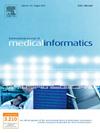atc到rxnorm的映射——OHDSI标准化词汇表和uml元词汇表之间的比较。
IF 3.7
2区 医学
Q2 COMPUTER SCIENCE, INFORMATION SYSTEMS
International Journal of Medical Informatics
Pub Date : 2024-12-31
DOI:10.1016/j.ijmedinf.2024.105777
引用次数: 0
摘要
介绍:世界卫生组织表示药物数据的全球标准是解剖治疗化学(ATC)分类。然而,它并不代表临床决策支持系统所需的成分和其他药物特性。映射到包含此信息的术语系统(如RxNorm)可能有助于填补这一空白。这项工作评估并比较了OHDSI标准化词汇表(OSV)和统一医学语言系统(UMLS)元词典中从化学物质级(第5级)ATC类到RxNorm成分概念的映射的完整性。方法:比较OSV和UMLS中ATC和RxNorm的收录内容以及BioPortal和美国国家医学图书馆(National Library of Medicine, NLM)资料库中ATC和RxNorm的收录内容,以检验两者的一致性。对于每个存储库,我们确定了第5级ATC概念、RxNorm成分概念、缺失类和概念的数量,以及缺失概念最多的ATC类别的数量。比较了OSV和UMLS中从ATC到RxNorm的映射,我们确定了常见映射的数量,以及映射的差异,并对其进行了分类。我们将来自OSV和UMLS的映射应用于电子健康记录(EHR)数据样本。结果:NLM包含的ATC和RxNorm概念最多。UMLS比OSV, 1949和916包含更多的缺失映射(空映射)。大多数映射差异是在“ATC标签中的未知成分”类别中,对此UMLS没有提供映射。UMLS在样本EHR数据中的映射覆盖率高于OSV,分别为96.5%和91%。讨论:总之,选择OSV而不是UMLS通常更适合ATC到RxNorm的映射,因为OSV提供了更多的映射。然而,样本数据的结果表明,在具体的应用程序中,UMLS可以有更少的空映射。本文章由计算机程序翻译,如有差异,请以英文原文为准。

ATC-to-RxNorm mappings – A comparison between OHDSI Standardized Vocabularies and UMLS Metathesaurus
Introduction
The World Health Organization global standard for representing drug data is the Anatomical Therapeutic Chemical (ATC) classification. However, it does not represent ingredients and other drug properties required by clinical decision support systems. A mapping to a terminology system that contains this information, like RxNorm, may help fill this gap. This work evaluates and compares the completeness of mappings from the chemical substance level (5th-level) ATC classes to RxNorm ingredient concepts in the OHDSI Standardized Vocabularies (OSV) and the Unified Medical Language System (UMLS) Metathesaurus.
Methods
To check the concordance between OSV and UMLS we compared the included contents of ATC and RxNorm not only in OSV and UMLS but also in BioPortal and the National Library of Medicine (NLM) repository. For each repository, we determined the number of 5th-level ATC concepts, RxNorm ingredient concepts, missing classes and concepts, and the ATC categories with the most missing concepts. The mappings from ATC to RxNorm in OSV and UMLS were compared, and we determined the number of mappings in common, and the mapping differences, which we categorized. We applied the mappings from OSV and UMLS on a sample of Electronic Health Record (EHR) data.
Results
NLM contained the most ATC and RxNorm concepts. UMLS contained more missing mappings (null mappings) than OSV, 1949 versus 916. Most mapping differences were in the “unknown ingredient in the ATC label” category, for which UMLS provided no mappings. UMLS had a higher coverage of mappings in the sample EHR data than OSV, 96.5% versus 91%.
Discussion
In conclusion, opting for OSV rather than UMLS is generally preferable for an ATC to RxNorm mapping since OSV provides more mappings. However, the results of the sample data show that UMLS can have fewer null mappings in concrete applications.
求助全文
通过发布文献求助,成功后即可免费获取论文全文。
去求助
来源期刊

International Journal of Medical Informatics
医学-计算机:信息系统
CiteScore
8.90
自引率
4.10%
发文量
217
审稿时长
42 days
期刊介绍:
International Journal of Medical Informatics provides an international medium for dissemination of original results and interpretative reviews concerning the field of medical informatics. The Journal emphasizes the evaluation of systems in healthcare settings.
The scope of journal covers:
Information systems, including national or international registration systems, hospital information systems, departmental and/or physician''s office systems, document handling systems, electronic medical record systems, standardization, systems integration etc.;
Computer-aided medical decision support systems using heuristic, algorithmic and/or statistical methods as exemplified in decision theory, protocol development, artificial intelligence, etc.
Educational computer based programs pertaining to medical informatics or medicine in general;
Organizational, economic, social, clinical impact, ethical and cost-benefit aspects of IT applications in health care.
 求助内容:
求助内容: 应助结果提醒方式:
应助结果提醒方式:


